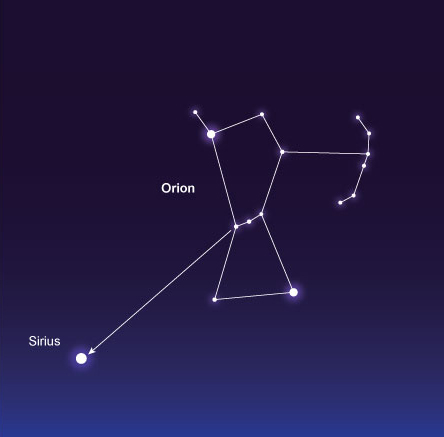3 The sky
This course will acquaint you with one of the most active research areas in astronomy: exoplanets. It would be a shame to study astronomy without sharing the primal and universal experience of viewing the night sky directly with your own eyes.
If you have time, on any suitable night, try the following (you’ll need about an hour).
Box 1 Stargazing
Go outside on a clear night, preferably away from city lights. If you have them, take a pair of binoculars with you. If you have a smartphone with GPS you can download an app that shows the positions of stars in the night sky wherever you are (free app for iPhone: SkyView [Tip: hold Ctrl and click a link to open it in a new tab. (Hide tip)] ; free app for Android: Sky Map). Alternatively, the website of Sky and Telescope magazine has a very useful ‘This week’s sky at a glance’ feature, which includes diagrams of what to look for each week.
Wait at least 15 minutes for your eyes to become adjusted to the dark. Is the Moon up? If it is, you may want to look in the opposite direction as it will be easier to see fainter objects if the Moon isn’t in your field of vision. You could try to spot a planet – if it is dawn or dusk and you see what looks like a very bright star close to the eastern (dawn) or western (dusk) horizon, you have probably seen Venus. Jupiter is also often clearly visible and is usually higher in the sky than Venus. You can identify planets because, as well as being very bright, they do not appear to twinkle, as stars do.
Stars are grouped into patterns on the sky, or constellations, many of which are traditionally imagined as mythological figures.
Good features to look for associated with some constellations include:
- The Plough (a distinctive pattern that makes up part of the constellation of Ursa Major, the Great Bear) and Polaris (the Pole Star, a bright star in the constellation of Ursa Minor, the Little Bear) (Figure 21).
- Cygnus (The Swan) (Figure 22) – believe it or not, most of the exoplanets we know of are in a tiny patch of sky in this constellation.
- Orion (winter months in the Northern Hemisphere and summer in the Southern Hemisphere) and Sirius, the brightest star in the night sky (Figure 23). Sirius is a binary star: two stars in orbit around each other. But all you see is light from one star – the other is a white dwarf and is very faint.
From a dark site, it is possible to see the Milky Way. It appears as a faint cloudy band across the sky. If you have a pair of binoculars, use them to scan along the Milky Way – the number of stars that can be discerned dramatically increases and you may spot beautiful ‘open clusters’ of bright young stars.
Video 4 shows a short time-lapse sequence of the night sky from the Canary Islands. In the video, the Milky Way moves from being roughly horizontal to roughly diagonal. You can see dark clouds of interstellar dust obscuring the light of billions of stars. Because your eyes’ pupils are smaller than the aperture of the camera used to make this film, you are unlikely to ever see this much detail with the naked eye.



